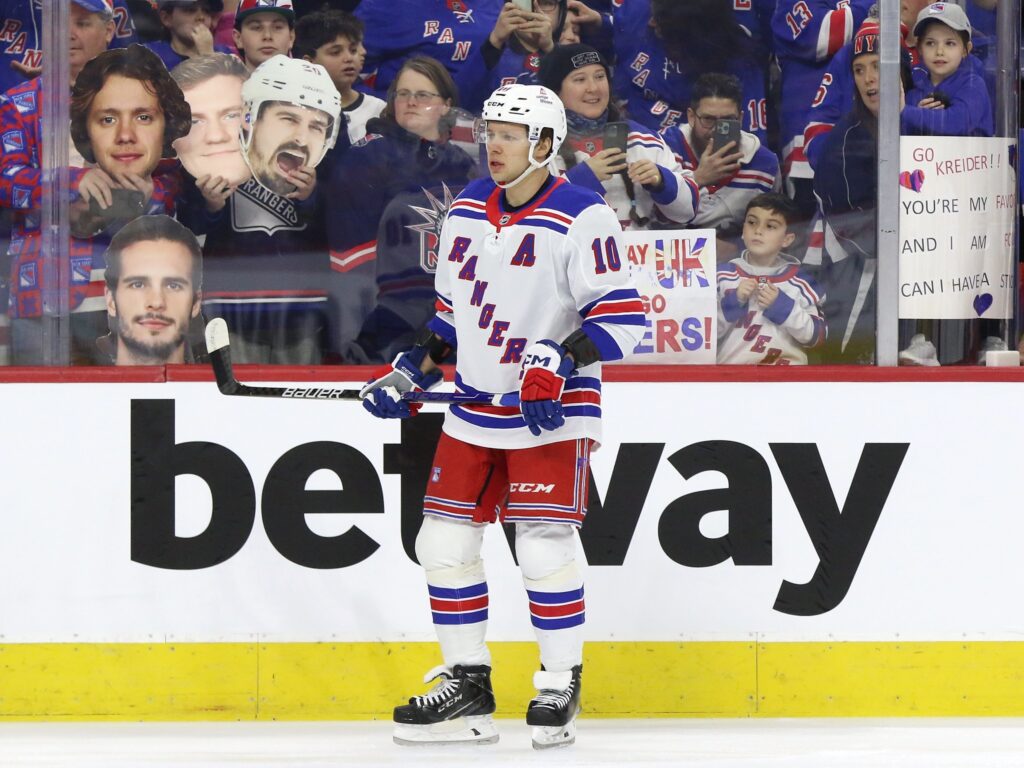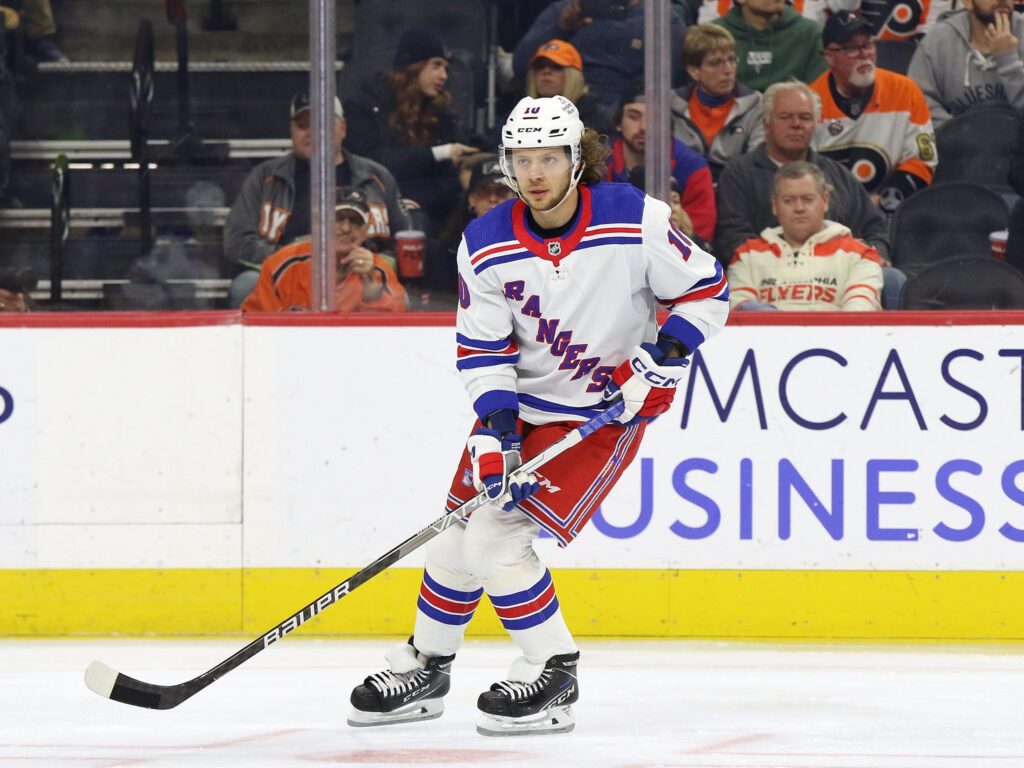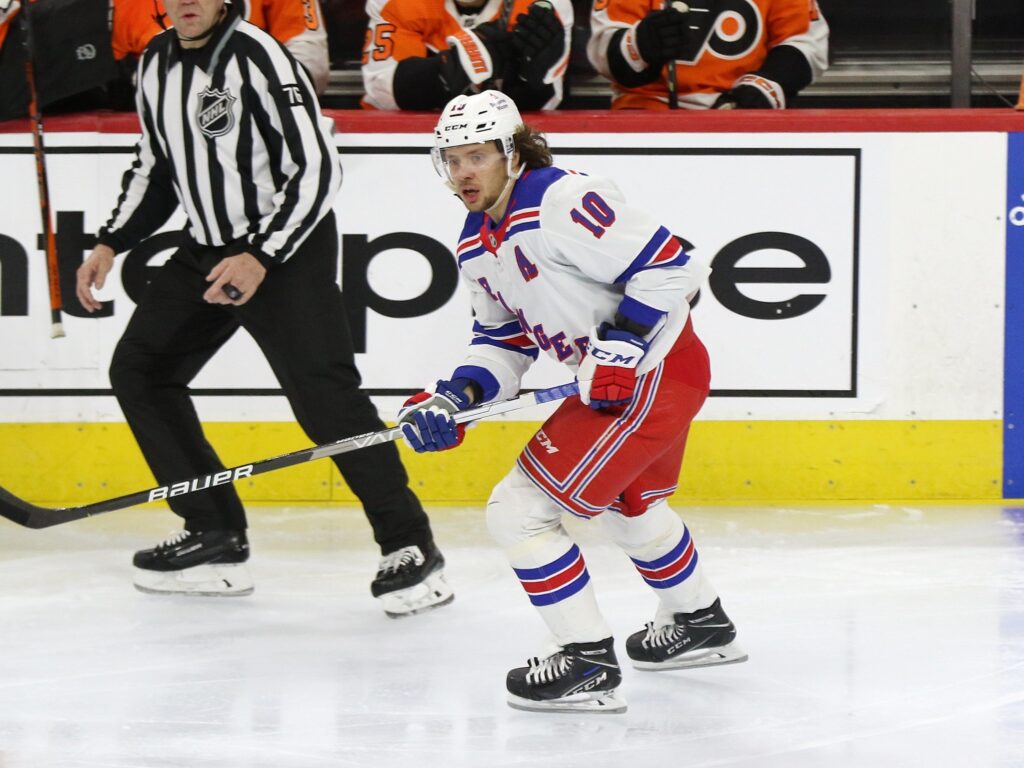As we head into the thick of the 2025 season, the clock is officially ticking on Artemi Panarin’s seven-year, $81.5 million pact, which wraps up after the 2025-26 campaign. For the New York Rangers, this isn’t just another contract negotiation; it’s a franchise-defining inflection point.
The debate raging from the suites at Madison Square Garden to the sports bars across the tri-state area is as simple as it is complex: Do you commit another king’s ransom to your offensive dynamo as he enters his mid-thirties, or do you make the gut-wrenching decision to move on? This is the kind of high-stakes poker that makes or breaks a general manager’s career. Let’s break down the hand Chris Drury is holding.
Why You Don’t Let a Point-Per-Game Superstar Walk
First, let’s state the obvious: Artemi Panarin has been everything the Rangers paid for and more. From a pure hockey standpoint, letting him walk seems borderline insane. Since arriving in New York, he hasn’t just been a top player; he’s been the offensive engine. The man has led the team in scoring every single season, racking up an astonishing 550 points in 430 games. His 1.28 points-per-game average isn’t just elite; it’s the best in the storied history of the New York Rangers.
Also on the EDGE – The Empire State of Concern: Unpacking the Rangers’ Looming Issues
As noted insider Frank Seravalli has argued, Panarin might be one of the most impactful unrestricted free-agent signings in NHL history. He was the catalyst that rocketed the Rangers out of their rebuild and back into legitimate contention. His $11.6 million cap hit, while eye-watering, has been earned. He remains one of the most creative and dangerous offensive players on the planet, a power-play quarterback with unparalleled vision and the ability to make something out of nothing.
While he may not be a Mark Messier-esque “rah-rah” leader, his value in the room shouldn’t be understated. He’s a quiet, respected veteran with a decade of NHL experience. You see younger, skill-based players like Lafrenière gravitate toward him, absorbing the nuances of being an elite offensive force. That kind of mentorship is invaluable.

From a business perspective, the timing might even work out. The NHL salary cap is projected to see significant jumps over the next few seasons. This financial flexibility could give Drury the breathing room needed to table a competitive offer without having to gut the rest of the roster. Insiders like Arthur Staple have gone so far as to label Panarin “untouchable” on the current roster, and Seravalli believes a new deal is a “match made in heaven.” After all, Panarin is a bona fide superstar in a market that craves them. He sells jerseys, he puts butts in seats, and he keeps the Rangers relevant in a crowded New York sports landscape.
The Cold, Hard Calculus of the Salary Cap Era
Now, for the other side of the ledger—the pragmatic, often painful, arguments for considering a future without the Breadman. The biggest, most unavoidable factor is age. Panarin will turn 34 during the final year of his current contract. While he’s still performing at an elite level now, the history of the NHL is littered with scoring wingers whose production fell off a cliff in their mid-to-late thirties. The question facing Drury is a daunting one: are you willing to sign a contract that could be worth upwards of $10 million AAV on the open market, knowing you might be paying for past performance and end up with a 60-point winger by year three or four of that deal?
This leads directly to the issue of contract flexibility. Panarin’s current deal contains a full no-move clause (NMC), giving him complete control over his destiny. Any new long-term deal would almost certainly demand another one. Drury has shown a recent appetite for shedding big-money deals that haven’t aged gracefully, as seen with his moves involving players like Barclay Goodrow and Jacob Trouba. Committing to another ironclad NMC for an aging star runs contrary to this apparent philosophy of maintaining future flexibility.
Also on the EDGE – Rangers Reload: A Deep Dive into the Blueshirts’ 2025-26 Forward Corps
Even with a rising cap, the numbers are tight. The Rangers are currently navigating a tricky cap situation. While significant space is projected to open up next summer, a $10 million-plus annual hit for Panarin is a massive allocation of resources. Every dollar committed to him is a dollar that can’t be used to retain younger assets, plug holes on the third line, or add a key piece at the trade deadline.
Then there is the disaster scenario: losing him for nothing as an unrestricted free agent in the summer of 2026. If the front office determines that a new contract is untenable, the only logical move is to trade him before the deadline. A player of his caliber would command a monumental return of prospects, picks, and NHL-ready talent that could set the franchise up for its next wave of contention. However, thanks to that NMC, Panarin holds all the cards. He would have to agree to waive it, and he would dictate the list of acceptable destinations.
Let’s not forget the context of the team’s recent performance. The Rangers’ shocking collapse in the 2024-25 season, where they missed the playoffs entirely after winning the Presidents’ Trophy, has put the organization under a microscope. While Panarin was far from the problem, a lackluster start to this season could, as insider Dave Pagnotta has suggested, trigger a “massive shake-up.” In that scenario, no one, not even an “untouchable” star, is truly safe.

Finally, while it’s a long shot, there’s the “Connor McDavid Factor.” Should the best player in the world actually hit the open market, a team like the Rangers would be professionally obligated to move heaven and earth to sign him. Such a pursuit would necessitate clearing massive amounts of cap space, and Panarin’s contract would be the first to go.
Drury’s High-Stakes Gamble
So, what’s the most likely play? All signs point to the Rangers playing this out. The consensus recommendation is to “run it back” with Panarin through the end of his contract in 2025-26. The logic is sound: if the Rangers have a legitimate chance to win the Stanley Cup any time soon, Artemi Panarin is integral to that chance. You ride that horse as far as it will take you, even if it means accepting the significant risk of him walking away for nothing.
The ultimate outcome will likely depend on Panarin himself. Is he willing to accept a shorter-term extension to stay in New York? Would he consider taking a slight pay cut from his market value to help the team remain competitive? Those are the multi-million dollar questions to which no one currently has the answers.
For now, the Panarin predicament remains the biggest storyline in New York. It’s a fascinating case study in loyalty versus business, short-term gain versus long-term stability. The only thing certain is that the next 10 months will be a pressure cooker for the Rangers’ front office, and the decision they make will shape the franchise for years to come.
Created with the aid of Gemini AI
